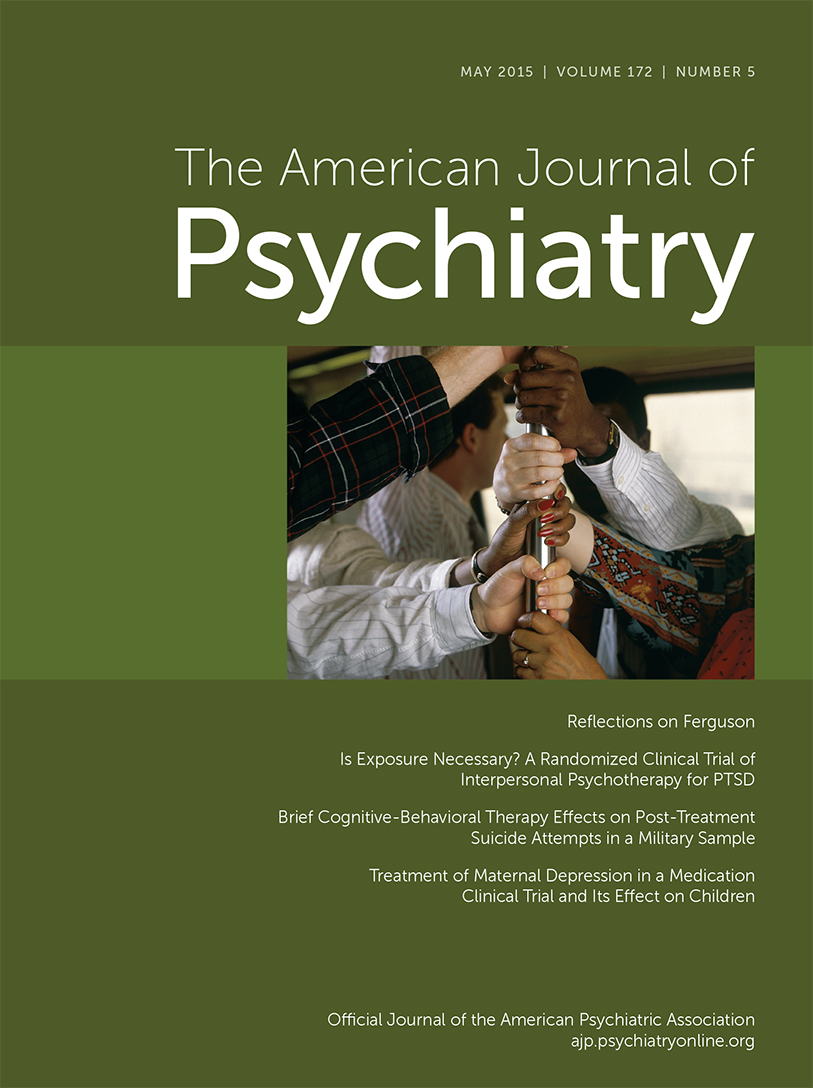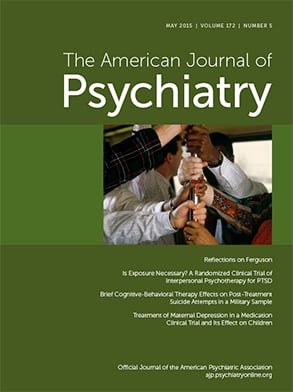T
o the E
ditor: We took note of the important findings presented by Georgios Petrides M.D., et al. (
1), published in the January 2015 issue of the
Journal, on the use of electroconvulsive therapy (ECT) as an augmentation strategy in clozapine-resistant patients. Because 40%−70% of patients demonstrate only a partial response to clozapine (
2), understanding the treatment strategies beyond clozapine is of paramount importance. There are few studies using ECT as augmentation, yet results have been promising (
3,
4). This suggests that more data providing information on augmentation of clozapine in schizophrenia would offer an important addition to the existing literature. Consequently, we would like to share our experience with 11 patients from a tertiary care hospital in North India in whom ECT was used to augment treatment with clozapine. In these patients, bitemporal modified, thrice-weekly ECT was started following 12 weeks of a stable clozapine dose, after they had shown a partial response to clozapine. All patients had a diagnosis of schizophrenia, with paranoid subtype (63.6%) being the most common. The mean age was 32.7 years (SD=6.4), with a range of 21–41 years, and 63.6% were men. The majority of these patients were unmarried (N=8 [72.7%]), currently unemployed (N=8 [72.7%]), from nuclear families (N=9 [81.8%]), and resided in an urban locality (N=9 [81.8%]). The mean number of years of education was 12.45 (SD=3.61; range: 5–17).
The total duration of illness ranged from 13 months to 18 years (mean=123.4 months [SD=60.5]). The treatment history in this sample involved the use of clozapine for a range of 13 weeks to 12 years, and all patients were demonstrating only a partial response at the time of initiating ECT. The mean number of ECT treatments administered was 12.81 (SD=6.6), with a range of 6–30. The mean duration of current used was 2.3 seconds (SD=1.4), with a mean charge of 310.5 coulombs (SD=198.4), and the mean motoric seizure duration was 39.9 seconds (SD=7.1) for the entire ECT course.
More than 90% of the patients had improvement (12 out of 13) in their clinical status as assessed by the Positive and Negative Syndrome Scale (PANSS). Response criterion was defined by >20% reduction in the PANSS total score. The mean reduction in the PANSS total score was 23.2 points from baseline (35% improvement) after the course of ECT. The mean PANSS score was 77.1 (SD=15.1) prior to ECT, which was reduced to 52.8 (SD=9.6). Positive symptoms as assessed using PANSS were reduced by 9.9 (SD=5.1) points, and there was a reduction by 4.1 (SD=2.2) and 12.5 (SD=5.4) points in negative symptoms and general psychopathology scores, respectively. In terms of complications, two patients developed prolonged seizures, which were managed with lorazepam, and one patient developed a transient raise in blood pressure, which was managed with esmolol. Additionally, two patients experienced brief (approximately 2 hours) post-ECT confusion. After the ECT augmentation was completed, patients maintained improvement for a follow-up duration ranging from 6 months to 9 years, and all continued to receive clozapine (mean dose: 339.8 mg/day [SD=120.8]; range: 175–550).
Like the findings reported by Petrides et al., our observations also support the beneficial effect of ECT as an augmentation strategy for patients with treatment-resistant schizophrenia who partially respond to clozapine. Accordingly, augmentation with ECT should be considered as an important treatment option in this subgroup of patients.

